Since God chose to enflesh the divine eternal Word in space and time, there has been initiated in human history the impulse in every age to analogously enflesh the Incarnate Word and the mysteries of redemption anew in gesture and sound, stone and wood, metal and paint, glass, clay, and fabric. In other words, not only must the Word be enfleshed anew in every age, there is no way not to enflesh Word anew in every age. We name this the demand of inculturation, the inevitable and ineluctable presentation of the Word in terms of and within the limits of the sounds and shapes, colors and contours available to artists and communities in their unique time and space in history. To make an image is to be part of God’s ongoing Creation and the ongoing Incarnation of the Word in every age anew. Artists are, by God’s grace and in differing degrees, evangelists in their times. They have the potential to unveil the mystery, to be instruments of epiphany. But the scandal of the Incarnation is that the Word becomes flesh in particular times and places.
—Andrew Ciferni, O.PRAEM “God’s Communities and Their Artists” in Beauty and Life
On Sunday, in preparation for Ash Wednesday, we burned the palms from last year’s Palm Sunday service. And so we begin again our trek into the mystery of the scandal of the cross become Glory. Whenever and however we enflesh anew’ the Word, creating in our art some new expression of mystery and epiphany we cannot escape traveling this road : that once again we are confronted with the humility of the Master of the Universe. Every creative work is a stop somewhere along this road.
Comments welcome.

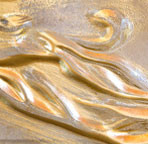
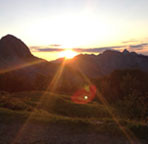
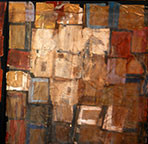
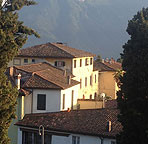
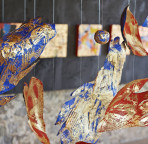
The big L (Leonardo) once addressed this question along these lines… “The Deity which invests the science of the painter functions in such a way that the mind of the painter is transformed into a copy of the Divine Mind. If the painter wishes to see beauties that charm him it lies in his power to create them. And if he wishes to see monstrosities that are frightful, ridiculous, or truly pitiable, he is lord and god thereof.” Perhaps if one is of heroic stature this seems more like a challenge than an awesome burden. I wonder how is it is we inchlings are not crushed though our sinews snap and muscles tear.
Cezanne (the big C!) is quoted as saying,”If I were called upon to define briefly the word Art, I should call it the reproduction of what the senses perceive in nature, seen through the veil of the soul.” As natural as it is for us to be creative, I think its the soul that looks longingly along the road for evidence that the Word made flesh has passed this way, and having passed this way has not been crushed or over come.
It must be something like that. Rather than a road, I like to think of a path. The soul ascends the course of a tumbling stream. The water is glad, the sun benign, the way is rocky but not impassable, the senses delight, but no sign is there of any Other come before us. The day’s ending, we put off our packs, uncertain of the night’s coming. Just then, across the water, we see a shelf above the bank. Unmapped: a long unused camp nearly hidden, and we know, just as we’ve reached this place, Someone also reached and left this welcoming evidence of Their passing.
I feel a deep ache and longing as I read the above quote. Art-making does not seem so sacred in our culture today as in the past. And yet, how can the creativity and joy of making art not be sacred and incarnational?
This challenges me to be more intentionally aware as I make art, to remember just what it is I am doing.
Excellent advice: we should all try to “remember just what it is I am doing.”
Last week, “the only really ‘serious’ thing in the world” was mentioned… well, forgive me, but art making is my theophany. I’ve heard it put forth that artists are akin to children scribbling in the margins of God’s commonplace book, but I maintain we are, in differing degrees (of course), evangelists, unveilers of mystery and instruments of epiphany. Yes, it is sacred and incarnational. Martha Graham referred to dancers as the athletes of God… we should strive for the same fortitude.
May I humbly submit that writers, preachers and even bloggers are also engaged in enfleshing the Incarnate Word and inculturating the Word in their own time and generation. Paraclete Press provides ample evidence for writers. As a preacher I believe a sermon is utterly dependent on the Holy Spirit and also a kind of performance art. How it is delivered is crucial for the response, and as with a piece of music, you can never deliver it exactly the same way twice. Today, a blog is one of the means available for this calling in our particular time and space in history.
I understand Mt. Tabor’s mission is focused on other art forms, for good reasons, but I also believe word-smiths play a role in the larger mission.
Thanks, Tim. I could’t agree with you more. And, just to say, Mount Tabor’s mission definitely includes the word-smiths. Jon Sweeney, an independent scholar and writer of popular history and Mark Burrows, a scholar of medieval Christianity, a poet, and a translator of German poetry will join Monsignor Timothy Verdon at the up coming St. Francis of Assisi Retreat. The retreat will be focused on Francis and Franciscan Spiritually in prayer, poetry, and art and is based at the Centre in Barga, Italy. We hope this will be the first of many such explorations!